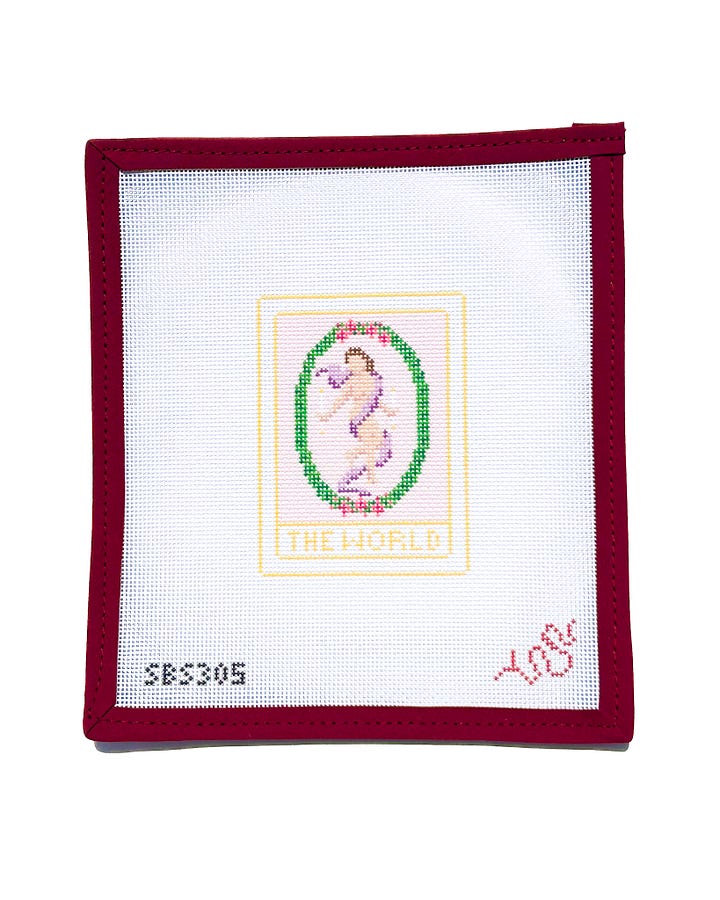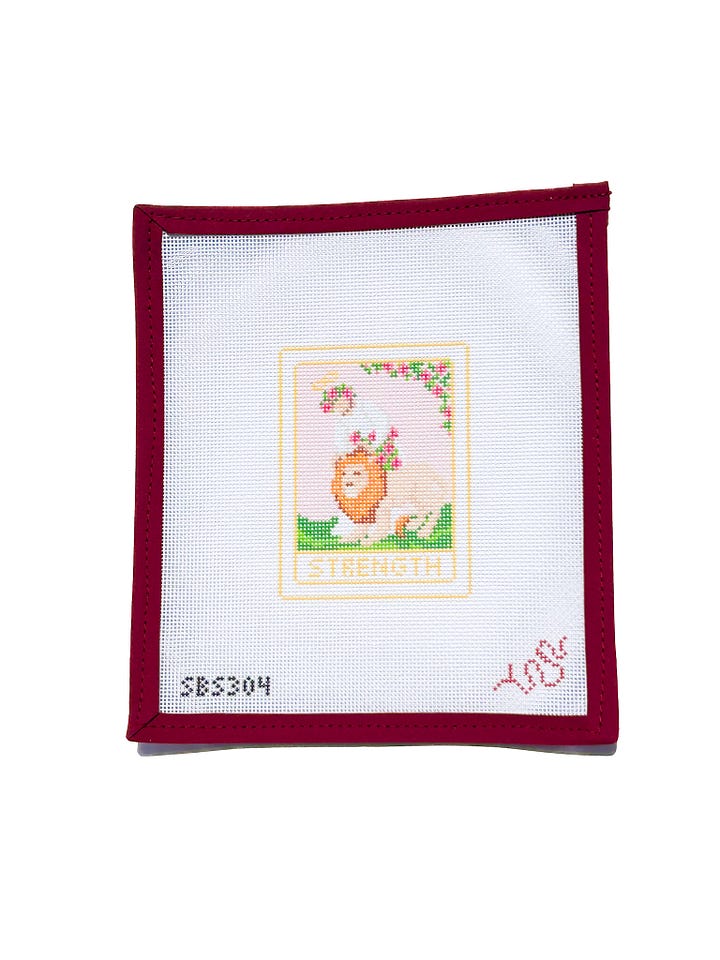An Introduction to Stitching the Tarot
Tarot is popular for its use as a tool of self-discovery and introspection. Stitching the Tarot allows us to sit with each image and engage in deep self-exploration.
I recently added two new Tarot Cards to the Spellbound Stitchery catalog of needlepoint designs. I am slowly working my way through designing the major arcana, but eventually I would like to design and stitch every card in the Tarot deck. (What a goal!)


Tarot is a card-based divination tool dating back to France in the late 1700s. Using archetypes and themes universal to the human experience, Tarot is popular for its use as a tool of self-discovery and introspection. While many people think that its use is for telling fortunes and predicting the future, Tarot is commonly used as a tool of reflection and insight.
Since Tarot is image-based, it is possible to draw meanings and insights from the cards without ever having studied Tarot or without a guide book to help you along. In fact, some suggest approaching the images in the Tarot one by one, allowing your imagination to show you the meanings of the cards through your unique interpretations of the symbols. Each person’s individual lived experiences and histories will make each symbol’s meaning slightly different, but each person will gain understanding through their subconscious mind’s inner wisdom.
One way to spend focused time with each Tarot card is to stitch them. Another artistic way to get to know each card is to find coloring pages of the Tarot cards and color them in. If you participate in either of these creative methods, I suggest using a more meditative mindset to do it (see this post for more on the mindset) and be sure to also journal your observations through the process.
Since the focus of my grimoire is on needlework, I am not here to guide you through a journey of working with Tarot cards themselves. However, if you’re curious about working directly with the cards, I highly recommend it. To get you started digging deeper into Tarot, the subconscious, and how to work with the cards, here are my two favorite books to get you started:
The Tarot Bible by Sarah Bartlett has been one of my all-time favorite reference books for working with the Tarot. It contains a comprehensive guide through all of the cards and their meanings, spreads you can use for readings, daily meditations, and more.
Tarot and the Archetypal Journey: The Jungian Path from Darkness to Light by Sallie Nichols introduces you to the tarot cards through the Jungian lens. Carl Jung spent a lot of time researching and writing about symbols, images, archetypes, and dreams, and how they connect with the collective unconscious. While Carl Jung didn't write about the Tarot specifically, his theories on archetypes and the collective unconscious strongly resonate with the symbolic language of the tarot, particularly the Major Arcana. Jung's ideas provide a framework for understanding the tarot as a tool for self-exploration and individuation, rather than solely as a method of divination.
Stitching Your Tarot Cards: Techniques from the Grimoire
There are several ways to incorporate the Tarot cards into your spiritual stitching practice. I will share them one by one in the weeks and months to come!
Exercise 1: Using the Tarot Card Canvases for Deep Reflection
Keep reading with a 7-day free trial
Subscribe to Spellbound Stitchery to keep reading this post and get 7 days of free access to the full post archives.


